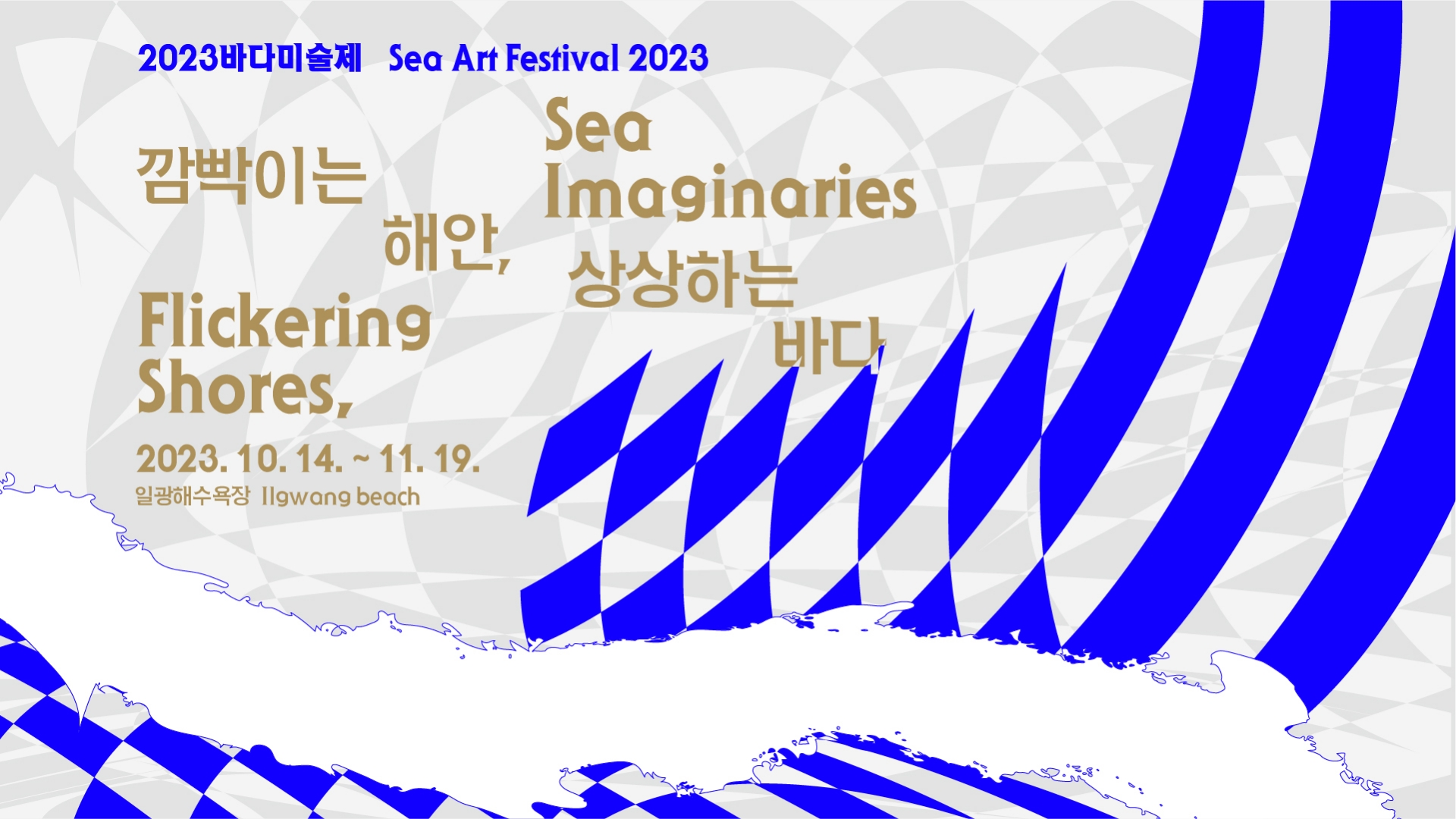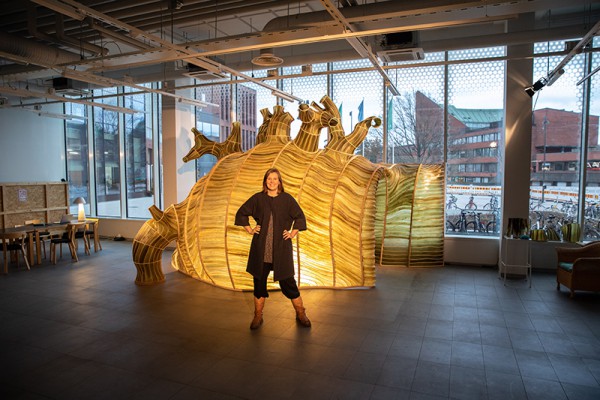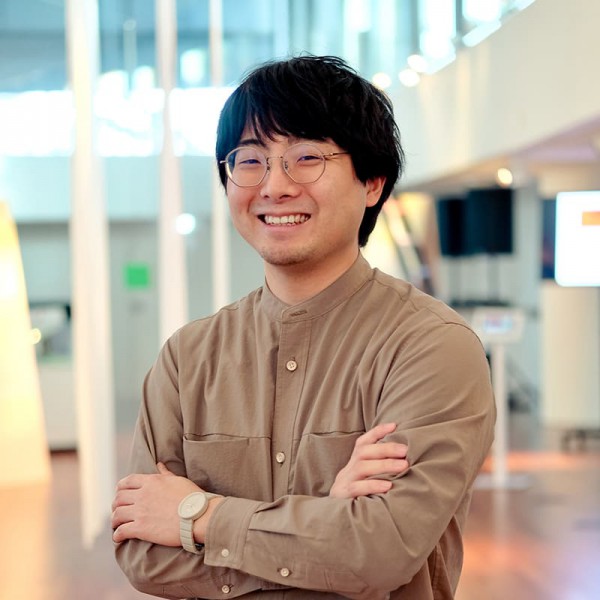


Flickering Shores, Sea Imaginaries, this year’s edition of the Sea Art Festival, is inviting us to rethink our relationship with the sea, referring to the beauty but at the same time, the fragility of our shores, and exploring alternative frameworks and visions for engaging with the ocean and marine environments.
The sea is deeply embedded in our lives and capitalist society, a vital source for our survival, but also a vast industry we exploit for food, medicines, energy, minerals, trading, travel and so on. But increased human activity, from extensive cruise tourism, shipping and overfishing to nuclear testing, pollution and deep-sea mining have been plaguing the sea, having a huge impact on marine ecosystems and habitats.

Instead of viewing the sea from the coast as a divided and abstract surface for moving around commodities, Flickering Shores, Sea Imaginaries reminds us that we are part of this body of water. This year's Sea Art Festival aims to explore new relationships with the sea and its ecologies, enabling spaces for cooperation, collective visions and synergies as a call to resistance and restoration.

Muhannad Shono is not limited to any one particular medium or scale. His multidisciplinary practice is catalyzed and structured by the story. Shono’s work harnesses the power of narrative by creating and contesting personal, collective, and historical truths. Impacted by childhood memories, throughout his early career—and right up until today—the aim and expression of his work are rooted in exploring both the existent and non-existent boundaries which have characterized his life. His works have been presented across the world, from intimate drawings and large-scale sculptural works to robotic and technological pieces, all of which illuminate a journey he would like to take us on.
VIEW MORE 
Merilyn Fairskye lives in Sydney, Australia whose recent video and photographic work explores the effects of powerful events of real life on humans and the environment. Current projects that explore the relationships between technology, atomic landscapes, and community have taken her on location to the Polygon in Kazakhstan, Sellafield, Chernobyl, and other key nuclear sites. Her work has been presented at over 180 exhibitions and festivals, including at the Museum of Modern Art, New York, Tate Modern, London, the Stedelijk Museum, Amsterdam, the Museum of Contemporary Art, Sydney, and the Art Gallery of New South Wales.
VIEW MORE 
Robertina Šebjanič is an internationally exhibited artist/researcher whose work explores the bio-chemical, (geo)political, and cultural realities of aquatic environments and the impact of humanity on other organisms. Her projects call for developing empathetic strategies aimed at recognizing the Other. In her analysis of the Anthropocene and its theoretical framework, the artist uses the terms “aquatocene” and “aquaforming” to refer to the human impact on aquatic environments. Her works have received awards and nominations at the Prix Ars Electronica, Starts Prize, Falling Walls, and RE:Humanism.
VIEW MORE 
Cho Eun-Phil uses blue as her main sculptural element to transform everyday materials into extraordinary and surreal spaces. With Cho, her blue is not just a color of physical materials; for her, each and every material is changed to blue and transformed into an illusionary space and a space of meaning. Her installations are a fundamental experiment about site-specificity and a challenge to it. These spaces allow not only the viewer but also the artist herself to experience unfamiliar moments. Recently, Cho has been working on a residency at Clayarch Gimhae Museum, with a particular interest in plant forms that change over time. She will be exhibiting at the Hangang Sculpture Project this year and at the Ichihara Lakeside Museum in Japan next year.
VIEW MORE 
Dukkyoung Wang takes note of the subtle and captures the indifferent. Wang tries especially hard to reveal the hidden side of those who are pushed to the periphery of society—those who are invisible and voiceless—by using various materials and media. In recent years, Wang has been trying to “speak to (someone)” and “capture (something)” by confronting the stories of women and considering the form of language that sutures the gaps between the inner and exterior sides of an individual.
VIEW MORE 


The entire world’s economy rests on the shipping industry. The majority of things that countries produce or use every day – consumer goods, wheat, rice, oil, wood, coal – are moved around the world on cargo ships that grow more and more massive every year. Most of these ships are powered by heavy fuel oil (HFO), a dirty fuel formed from the residual (and therefore cheaper) product left over from petroleum refining. All this HFO leaves its traces across oceans and waterways across the world.
One response to this within the maritime sector is to build ‘greener’ ships that run on ‘greener’ fuels. Over the coming years, Busan’s shipyards will be hard at work building a new fleet of ‘green’ ships that run on alternative fuels such as methanol and hydrogen. Once built, many of these ships will run across what are called ‘green corridors’, bilateral agreements formed between two ports around the world, to plan for the green transition in shipping, secure the supply of ‘green’ fuels and the new infrastructure for refueling ships.
This research film by Liquid Time remotely follows the course of one cargo ship sailing from Rotterdam to Singapore, down one of the world’s largest proposed green corridors. Through a series of conversations held over the course of the 30-day voyage, this work examines the production of the image of the shipping industry’s green future, looking at the legal, economic and infrastructural basis for a green transition that, although promised, remains a distant prospect.
Peeling back the layers of regulation and economic planning that constitute the green corridor, Liquid Time show how the industry response to the climate crisis is not one based on radically altering current markets away from destructive tendencies, but generating new markets within which the same business-as-usual processes that drive the world economy can play out.
VIEW MORE 
What does a boat represent?
The night is a time when objects that are clearly visible during the day become shrouded in the shell of darkness, connecting through personal imagination. It offers an experience of the unfamiliar, guiding us through vague boundaries with strange and fantastical feelings. Based on these thoughts, Between Light and Darkness intends to explore things that can be sensibly defined in a conventional manner, yet viewed from a different dimension, it aims to reveal them as ambiguous, peculiar or uncanny.
The blue lace used by the artist to cover these boats forms the outer layer of this work, and blue is a color with a heavy presence in this environment between the sea and the sky. But blue also carries the significance of darkness. Darkness, where light is lost, momentarily sets aside the clear existence of familiar objects we know and focuses on landscapes and objects in the dark, opening up a new sense and way of seeing them.
A boat at sea is a common and familiar sight, and an object with a distinct and unique name. In a place like Ilgwang, a boat is a ubiquitous object that we rarely pay attention to. Ilgwang (sunshine in Korean), where this artwork is located, is said to be the place that receives the sunlight first. By enveloping the boat in blue lace during this brief overlap of light and darkness, the boat in the dark temporarily sets aside its clear existence and meaning, becoming a subject that invites us to imagine alternative meanings. While the lace surrounds the entire form of the boat, it simultaneously reveals parts of it hidden beneath the patterned fabric. Like skin, the lace covers the object, making it opaque but also accentuating the subtleties of it hidden underneath.
Seen yet unseen, an everyday object becomes open to new interpretations and stories. Is this the representation of a journey or a passage? A journey at its beginning or the end?
VIEW MORE 
Famously, there are no scientific parameters to explain what consciousness is, or how it emerged: this is known as “the hard problem of consciousness.” But maybe this problem is only hard from humans’ point of view. All Is Water turns the tables and reflects on this problem from the perspective of non-human consciousness. Featuring a speculative text spoken and written by a computer, the film moves from meditations on the history and limits of science to an almost mystical exploration of fish consciousness.
All Is Water filmed in Corsica during the spawning period of the Chromis Chromis - a small species of ray-finned fish from the Eastern Atlantic and Mediterranean - when the scientists Anja Wegner and Alex Jordan set up an experiment to determine how architecture affects the social behavior of the fish. SUPERFLEX supplied three buoyant structures designed to appeal to underwater life. The local Chromis Chromis population congregated around these structures in great numbers in order to spawn.
As the film goes on, the narration expands its scope from this specific experiment to ask which methods—beyond the materialism of Western science—might be useful for reimagining the hard problem of consciousness. Combining scientific speculation, architectural futurism, and AI-generated philosophy, All Is Water suggests that consciousness is not a stable category, and that humans can potentially shift their perspective in order to tune in to the needs, preferences, and spiritual life of other species.
All is Water is supported by the Danish Arts Foundation.
VIEW MORE 
Lab C explore locations in different regions, and in nature to discover nuanced stories. They led a workshop with children for Sea Art Festival 2023 to explore forgotten spaces around Ilgwang, especially the Ilgwang Stream which is a brackish water zone. The results and videos of the workshop are presented in this exhibition allowing us to contemplate the importance of our relationship with nature.
Muddy water has a blurry meaning, as it can be a mixture of dirt and water. “Blurry” is an interesting term for the artists here, as it indicates a changing state, for example a variable status between “clean (or flowing, running) water” and “dirty (or stagnant, messy) mud.”
In Korean, as in other languages, the phrase “muddy water” is used frequently and commonly in a negative way. And similarly, the expression “mud fight”, which figuratively indicates a dirty fight. This ambivalence between “positive” and “negative”, or “water” and “dirt”, while confusing, it can be fascinating. Like the randomness of chaos that can have varied potential.
Ilgwang Stream, which meets Icheon Port on the left side of Ilgwang Beach, flows into the sea by combining 10 tributaries, including Dalum Mountain Valley, Hambaek Mountain Valley, Nine Mountain, and Ilgwang Mountain Valley, which are the origins. And when the tide progresses, the seawater flows back into the Ilgwang Stream. Ilgwang Stream, where seawater and freshwater meet, is a brackish water area and a wetland. According to a survey by the Busan Research Institute in 2001, a total of 395 species were observed in the area, and in 2005, salmon, which was released into the wild from Gijang, returned in the stream. In 2021, with the creation of Ilgwang Icheon Ecological Park and the surrounding trail project underway, rapid changes are expected to occur in the ecological environment of Ilgwang Stream.
Lab C’s research shows evidence of fish diversity in the stream. In addition to the four-white fish of Ilgwang Stream, sweetfish, mullet, perch, blowfish, salmon, and eel, which are conciliatory fish, and even the brackish brown goth, which is second class endangered shellfish.
If one walks up along Ilgwang Stream, they will see the river maintenance work still in full swing. The spatial transformation of brackish water and wetlands continues. When management and control systems began to intervene, the flow of water that naturally flowed into the sea is changing. And obviously, changes are also occurring in various life forms that rely on wetlands and brackish water areas. Could this human intervention here be considered a recovery or another destruction? It is at this point that the artists are interested in questions about the presence of Ilgwang Stream through the concept of 'muddy water.'
VIEW MORE 
Have you ever looked closely at a grain of sand? Imagined it as a small part of the world, with its very own story to tell?
The journey of a grain of sand has been guided by water, wind, and ice over time. Just like people, each grain has its own character and tells a unique story of the land and history. It is also one of the most important materials in our lives. Without it, we would have no glass, no computer chips, and no buildings.
To See a World in a Grain of Sand is a project that maps the Earth through small sand samples contributed by people worldwide, revealing hidden narratives embedded in glass fused from 'wild' sands. From a hot and dry desert to a cold and snowy mountain; a skyscraper in a bustling city to an archaeological ruin; an invisible political border to a vast and open landscape; an excavated gold mine to the bottom of an ancient seabed; or a place of civil unrest to a serene holiday island. When these geographical diversities become visible, it becomes clear that sand carries not only ecological significance but powerful social and political histories.
Specially curated for the Sea Art Festival, Atelier NL delves into South Korea's history. In the intricate tapestry of our planet's story, sand stands as a silent witness to the passage of time, shaped over billions of years. Yet, this seemingly abundant resource faces an urgent global crisis - a scarcity driven by insatiable demand.
Every year, we remove billions of tons of sand from beaches, rivers, oceans, and quarries across the planet, locking it away in infrastructure and technology. This makes sand one of the most quickly disappearing natural resources in the world, so much that there is now a global sand scarcity.
Amidst these global challenges, South Korea stands at a crossroads. As a rapidly growing nation, it must strike a delicate balance between ambitious development plans and safeguarding the environment. Busan's skyline of towering skyscrapers showcases the magnitude of sand's role in construction. It serves as a poignant reminder that sustainable sand management is crucial to support the city's growth while preserving the natural beauty that surrounds it. This installation invites you to see the world anew, where the humble grain of sand carries stories of our past, present, and future.
The collected sands, mainly gathered by Bora Hong, a multidisciplinary designer from Seoul now residing in Chiang Mai, are visualized on the map of South Korea. During her 10-day road trip, she collected sands from diverse beaches along the coastline. Exploring rivers and little streams led her to unexpectedly beautiful and tranquil locations. Bora's involvement with "aworldofsand.com" allowed her to uncover sands with profound stories and memories reflecting the country's rich cultural heritage and natural beauty.
Alongside Bora's captivating journey, Atelier NL categorized each story and place into six themes: history, migration, meaning, ecology, delay, and scarcity, providing a unique perspective on the sands' significance and the memories they evoke.
VIEW MORE 

포레스트 커리큘럼은 남아시아와 동남아시아를 잇는 삼림지대 조미아의 자연문화를 통한 인류세 비평을 주로 연구합니다. 작품 유랑하는 베스티아리는 이 연구의 일환으로, 비인간적 존재들이 근대 국민국가에 내재된 계급적이고 세습적인 폭력과 그에 따른 잔재들에 어떻게 대항해왔는지를 보여주는 작품입니다. 좌중을 압도하는 듯한 거대한 깃발들은 위태롭고도 불안하게 스스로를 지탱하고 있는 듯 보입니다. 깃발에는 벤조인이나 아편부터 동아시아 신화에 등장하는 동물들까지 비인간 존재들을 상징하는 대상들이 그려져 있습니다. 각 깃발들은 비인간적 존재들의 대표자로서 모두가 한데 결합되어 아상블라주 그 자체를 표상합니다. 또한 깃발들과 함께 설치된 사운드 작품은 방콕과 파주에서 채집된 고음역대의 풀벌레 소리, 인도네시아의 경주용 비둘기들의 소리, 지방정부 선거를 앞두고 재정 부패를 유지하기 위한 수단으로 쓰이는 불필요한 공사에서 발생하는 소음, 그리고 위의 소리들을 찾아가는데 사용된 질문들과 조건들을 읽어 내려가는 내레이션으로 이루어져 있습니다.




